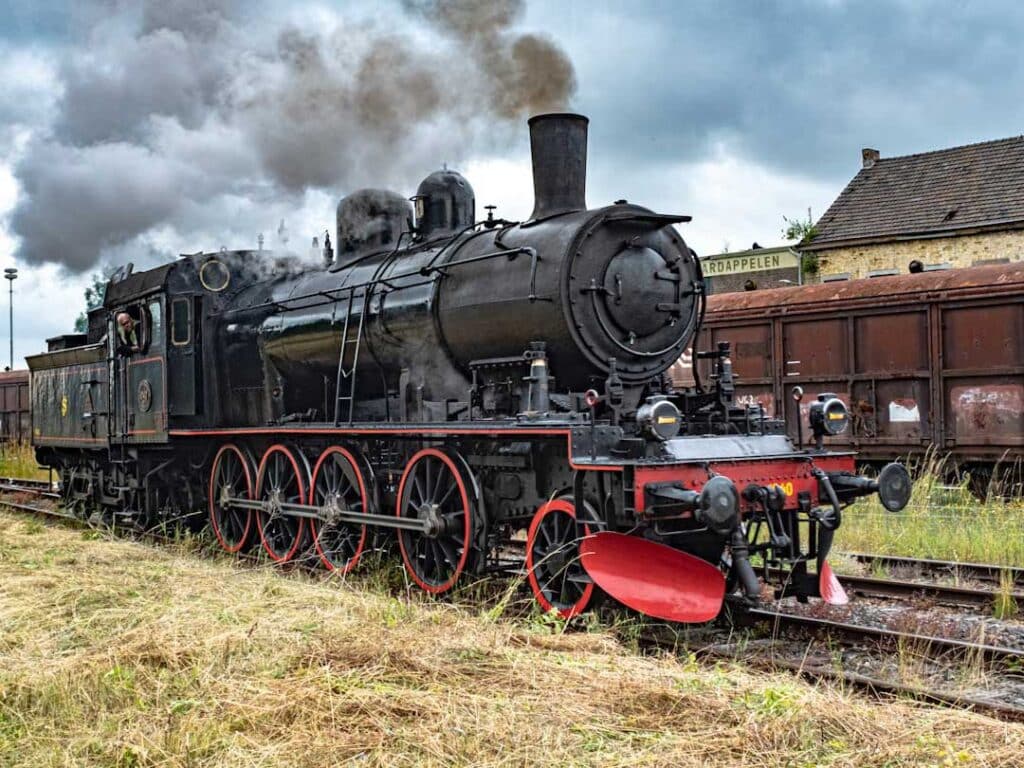Great Britain boasts a rich tapestry of railway history, with the Heritage Railway Association offering a glimpse into the golden age of steam, iconic locomotives, architectural marvels and the evolution of rail technology. While many are familiar with the more prominent preserved railways, there’s a world of hidden gems waiting to be discovered. These lesser-known lines not only provide unforgettable steam train experiences but also play a crucial role in preserving traditional railway skills and knowledge.
In this exploration of the UK’s hidden railway treasures, we’ll journey through some of the most captivating yet underappreciated heritage lines, delving into their unique railway signalling systems and the impact of heritage railways on local communities.
The Charm of Lesser-Known Heritage Railways UK
1. The Strathspey Railway: A Highland Gem
Nestled in the heart of the Scottish Highlands, the Strathspey Railway offers a steam locomotive experience like no other. This 10-mile stretch of preserved railway runs through the stunning Cairngorms National Park, providing passengers with breathtaking views of the surrounding mountains and forests.
What sets the Strathspey Railway apart is its commitment to authenticity. The line uses a traditional token block system for its railway signalling, a method that has been in use since the Victorian era. This system not only ensures safe operation but also offers visitors a chance to witness firsthand how railways were managed in the past.
The impact of heritage railways on local communities is particularly evident here. They have become tourist railways and a significant boosting the local economy and providing employment opportunities. Moreover, it serves as an educational resource, offering insights into the region’s industrial heritage and the importance of railways in shaping the Highland landscape.
2. The Esk Valley Line: Yorkshire’s Hidden Treasure
While not a traditional heritage railway, the Esk Valley Line in North Yorkshire deserves mention for its unique blend of modern service and historical significance. This 35-mile route from Middlesbrough to Whitby passes through some of the most picturesque countryside in England, including the North York Moors National Park.
The line is notable for its use of both modern and traditional signalling systems. At certain points along the route, you can still see semaphore signals in operation, a rarity on the national network. These mechanical signals, with their distinctive arms and coloured lights, stand as a testament to the enduring effectiveness of Victorian engineering.
The Esk Valley Line plays a vital role in preserving traditional railway skills and knowledge. Network Rail, in partnership with local heritage groups, runs training programmes for signal engineers, ensuring that the expertise needed to maintain these historical systems is passed on to future generations.
3. The Lynton & Barnstaple Railway: Narrow Gauge Wonder
For those seeking a truly unique steam train experience, the Lynton & Barnstaple Railway in Devon offers something special. This narrow-gauge line, originally opened in 1898 and closed in 1935, is currently being restored by a dedicated group of volunteers.
The railway’s signalling system is a fascinating blend of old and new. While it uses traditional mechanical signals, these are integrated with modern safety systems, showcasing how heritage railways can adapt historical technology to meet contemporary safety standards.
The ongoing restoration of the Lynton & Barnstaple Railway is a prime example of the positive impact of heritage railways on local communities. The project has not only created jobs but also sparked a renewed interest in the area’s history. Local schools regularly visit the railway, learning about engineering, history, and the importance of volunteer work in preserving cultural heritage.
Preserving Railway Heritage: More Than Just Nostalgia
Heritage railways in the UK are not merely tourist attractions; they serve as living museums, preserving a crucial part of our industrial and cultural heritage. The work done on these preserved railways goes far beyond maintaining tracks and rolling stock. It’s about keeping alive a whole ecosystem of skills and knowledge that would otherwise be lost to time.
1. Signalling: The Heart of Railway Operations
Railway signalling systems are at the core of safe and efficient rail operations. On heritage lines, visitors can often see a variety of signalling methods in use, from the earliest mechanical systems to more modern electronic installations. This diversity offers a unique opportunity to understand the evolution of railway technology.
For instance, the North Norfolk Railway uses a mix of semaphore and colour light signals, providing a comprehensive overview of signalling history. Volunteers and staff work tirelessly to maintain these systems, preserving skills that are becoming increasingly rare in the age of computerised signalling.
2. Steam Locomotive Experiences: More Than Just a Ride
The allure of UK steam trains goes beyond the nostalgia of a bygone era. These magnificent machines offer hands-on learning experiences that are hard to find elsewhere. Many heritage railways offer footplate experiences, allowing enthusiasts to learn about the intricacies of operating a steam locomotive.
The Severn Valley Railway, for example, runs courses on steam locomotive firing and driving. These experiences not only provide unforgettable memories but also play a crucial role in preserving traditional railway skills and knowledge. Participants learn about boiler management, understanding steam pressure, and the importance of timing in railway operations.
3. Community Engagement and Economic Impact
The impact of heritage railways on local communities cannot be overstated. These railways often become the centrepiece of local tourism, drawing visitors from across the country and beyond. This influx of tourists supports local businesses, from bed and breakfasts to restaurants and shops.
Moreover, heritage railways frequently engage with their communities through educational programmes, special events, and volunteer opportunities. The Bluebell Railway in Sussex, for instance, works closely with local schools, offering educational visits that bring history and science curricula to life.
The Future of Heritage Railways
As we look to the future, heritage railways face both challenges and opportunities. The need to balance historical authenticity with modern safety standards and environmental concerns is an ongoing issue. Many lines are exploring innovative solutions, such as using bio-fuels in their steam locomotives or incorporating solar power into their operations.
The digital age also presents new possibilities for heritage railways. Virtual reality experiences, for example, could allow visitors to explore signal boxes or engine sheds in ways that were previously impossible due to safety constraints.
Conclusion: A Journey Through Time and Technology
The hidden gems of UK heritage railways offer more than just a trip down memory lane. They provide a tangible link to our industrial past, a showcase of engineering prowess, and a testament to the dedication of those who work tirelessly to preserve this vital part of our heritage.
From the Highland landscapes of the Strathspey Railway to the narrow-gauge wonders of the Lynton & Barnstaple line, these preserved railways offer unique insights into the development of railway technology, particularly in the realm of signalling systems.
As we’ve seen, the impact of heritage railways extends far beyond their tracks. They play a crucial role in local economies, provide educational resources, and offer a platform for preserving skills and knowledge that might otherwise be lost.
So, the next time you’re planning a journey, consider stepping off the beaten track and exploring one of these hidden railway gems. You’ll not only experience the thrill of a steam locomotive but also contribute to the preservation of an important part of our cultural and technological heritage. These railways are not just relics of the past; they’re living, breathing examples of how history can inform and enrich our present and future.

